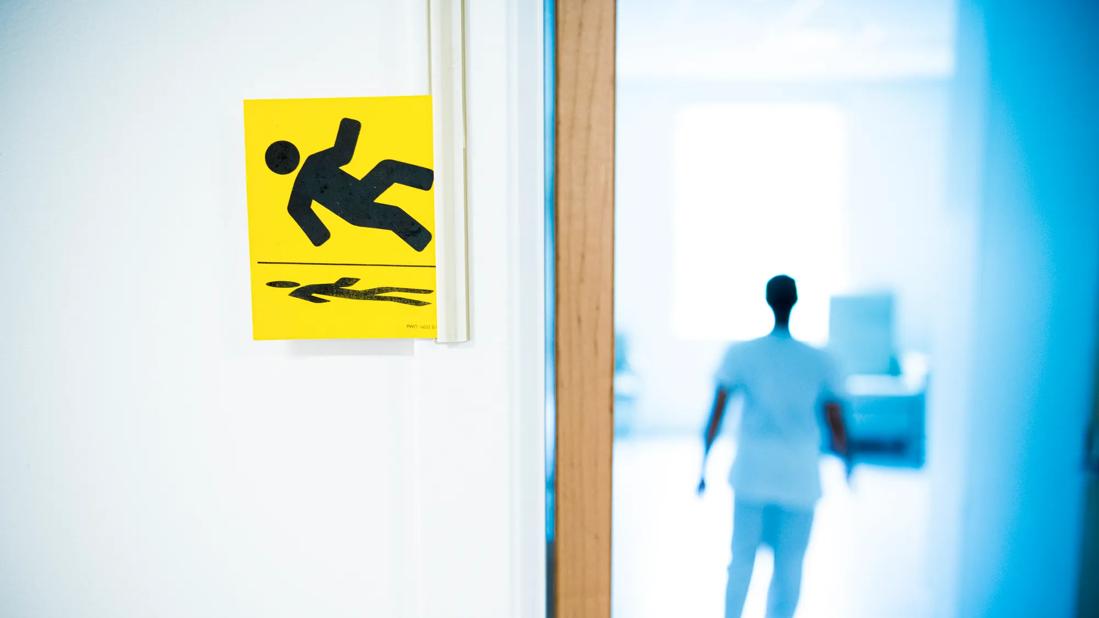Nurses create hand-off tool to decrease falls

In April 2019, the fall rate at Cleveland Clinic Avon Hospital was 5.22 per 1,000 patient days. Using continuous improvement principles, members of the Nursing Professional Practice Council launched an A3 initiative to decrease the fall rate and increase patient safety. They joined together with patient care nursing assistants (PCNA) from the PCNA Council, nurse managers, nursing directors and Mary Sauer, DNP, MBA, RN, NEA-BC, Chief Nursing Officer, to develop and implement a simple tool to tackle one of the primary causes of fall-related events – the need for improved communication between clinical nurses and PCNAs.
Advertisement
Cleveland Clinic is a non-profit academic medical center. Advertising on our site helps support our mission. We do not endorse non-Cleveland Clinic products or services. Policy
After reviewing the literature on caregiver communication and patient falls, a group of frontline nurses and PCNAs created the S.A.F.E. script. “We wanted a visual reminder that was user-friendly and easily accessible to nurses and PCNAs,” says Susan Moran, MSN, RN, Nurse Manager of the rapid observation unit and a member of the team that worked on the project.
The standardized hand-off template, which is printed on laminated pocket cards for all caregivers, relies on the acronym S.A.F.E. to guide communication between nurses and PCNAs:
S – Symptoms: The card lists 12 symptoms that can increase risk of fall, including dizziness, confusion, neuropathy, recent fall and vision impairment.
A – Activity: This refers to the level of assistance the patient needs and his or her mobility plan.
F – Fall Risk Intervention: The script lists interventions that a nurse might use for patients at risk of fall, such as
as bed/chair alarms, fall wristbands, increased frequency of rounding and targeted toilet scheduling.
E – Effects of Medication: The script reminds caregivers to consider the effects of numerous medications, including diuretics, anesthesia, bowel preps and opiates.
In addition to pocket cards, larger S.A.F.E. scripts are posted at the nurses’ station on all inpatient units. Using the script as a guide, clinical nurses share information with PCNAs three times during a 12-hour shift: immediately following bedside report between nurses, prior to lunch and at end of shift to ensure expected patient care was completed and documented.
Advertisement
An example S.A.F.E. script communication hand-off might be: “The patient in 407 is hearing impaired, dizzy and had a recent fall at home prior to admission. Her activity ordered is to be out of bed with assistance. She has a fall wristband and needs to sit on the edge of the bed for one minute before standing. She is on diuretics, so she may need to go to the bathroom frequently.”
Caregivers were educated on the S.A.F.E. script during huddles and staff meetings. After implementation in the second quarter of 2019, nurse managers performed audits on their units, asking nurses what they communicated to PCNAS, then checking with PCNAs to confirm they heard the same message. “Hearing the same message as to why a patient might fall and communicating frequently with the RN increased teamwork among caregivers,” says Sauer. “Working together, the RN and PCNA play an active part in the fall prevention plan for their patients.”
Post-intervention, hospital-wide fall rates at Avon Hospital decreased during the first quarter of 2020 to the following:
“Patients are in the hospital to get better, and we want to keep them safe. The S.A.F.E. script helps,” says Moran. “It’s also a great tool for caregivers to help convey information that’s very important. When a patient falls, caregivers feel horrible. They are like second victims. So we are protecting ourselves, each other and the patient.”
Advertisement
Advertisement
Advertisement

An unexpected health scare provides a potent reminder of what patients need most from their caregivers

Cleveland Clinic Abu Dhabi initiative reduces ICU admissions and strengthens caregiver collaboration

Veteran nurse blends compassion, cutting-edge transplant training and military tradition to elevate patient care

Embrace coaching and other tips to be a stronger leader

Compassion, communication and critical thinking are key

Study illuminates value of shared decision-making

How hospitals can weave ethics into daily nursing practice to strengthen patient-centered care

Mobility carts provide exercises and tools